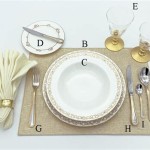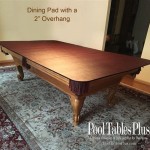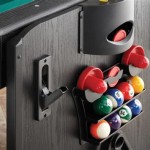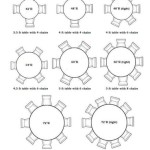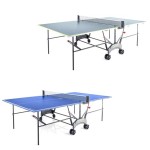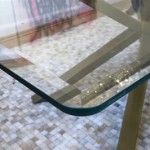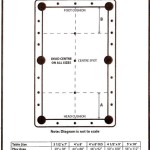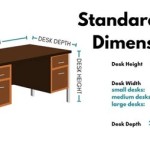Navigating the World of World Market Side Tables: A Comprehensive Guide
World Market has established itself as a prominent retailer offering a diverse range of home furnishings, including a considerable selection of side tables. These tables serve various functional and aesthetic purposes within a living space, acting as convenient surfaces for lamps, drinks, books, and decorative items. Understanding the nuances of World Market's side table offerings can aid consumers in making informed purchasing decisions that align with their individual needs and preferences.
The appeal of World Market side tables lies in their blend of accessibility, design variety, and relatively affordable pricing. This article aims to provide a comprehensive overview of World Market's side table collection, exploring key aspects such as materials, styles, sizes, construction, and factors to consider when selecting the appropriate option. By examining these elements, consumers can better assess the value proposition of World Market side tables in relation to other available alternatives.
Material Composition of World Market Side Tables
A significant determinant of a side table's durability, aesthetic appeal, and overall cost is its material composition. World Market side tables are constructed from a variety of materials, each possessing unique characteristics and contributing to the table's overall functionality and design.
Wood: Wood remains a prevalent material in side table construction due to its inherent strength, versatility, and natural beauty. World Market utilizes various wood species, including mango wood, acacia wood, pine, and reclaimed wood. Mango wood, known for its durability and unique grain patterns, is frequently employed in rustic and bohemian-inspired designs. Acacia wood is another popular choice, offering a blend of strength and water resistance, making it suitable for both indoor and covered outdoor use. Pine, a more affordable option, is often used in painted or stained side tables. Reclaimed wood, sourced from salvaged materials, provides a sustainable and character-rich option, adding a distinct vintage aesthetic to a space. The type of wood used directly influences the table's price point and perceived value.
Metal: Metal side tables, or metal accents incorporated into wooden tables, provide a contemporary and industrial aesthetic. Iron, steel, and aluminum are commonly used metals. Iron and steel offer robust strength and are often powder-coated to enhance durability and prevent rust. Aluminum is lighter in weight and suitable for outdoor use, particularly in coastal environments. Metal can be utilized in the table's frame, legs, or tabletop, adding a contrasting element and reinforcing the overall structure.
Glass: Glass tabletops add a touch of elegance and airiness to a side table. Tempered glass, known for its increased strength and shatter resistance, is the standard for safety reasons. Glass tabletops can be clear, frosted, or tinted, allowing for diverse design options. They are particularly suitable for smaller spaces as they visually minimize the table's presence.
Other Materials: World Market also features side tables constructed from less conventional materials, such as rattan, wicker, and concrete. Rattan and wicker evoke a bohemian or coastal aesthetic, often used in outdoor or sunroom settings. Concrete side tables provide a modern and minimalist look, suitable for both indoor and outdoor use due to their durability and weather resistance. The selection of materials reflects World Market's commitment to offering diverse design styles catering to varied consumer preferences.
Styles and Designs Available at World Market
Beyond material composition, the style and design of a side table are crucial factors in determining its suitability for a particular space. World Market offers a wide array of styles, ranging from traditional to contemporary, allowing consumers to find pieces that complement their existing decor.
Traditional: Traditional side tables often feature classic silhouettes, ornate details, and rich finishes. Carved wood accents, turned legs, and antique-inspired hardware are common features. These tables typically blend seamlessly into traditionally furnished living rooms and bedrooms.
Modern: Modern side tables emphasize clean lines, minimalist forms, and geometric shapes. They often incorporate metal and glass elements, reflecting a contemporary aesthetic. These tables are well-suited for modern apartments and minimalist interiors.
Industrial: Industrial side tables draw inspiration from factories and warehouses, featuring raw materials, exposed hardware, and utilitarian designs. Metal frames, distressed wood finishes, and riveted details are characteristic elements. These tables add a rugged and urban touch to a space.
Bohemian: Bohemian side tables embrace eclectic designs, incorporating natural materials, vibrant colors, and globally inspired patterns. Rattan, wicker, and macrame details are frequently used. These tables create a relaxed and unconventional atmosphere.
Rustic: Rustic side tables evoke a sense of warmth and authenticity, featuring natural wood finishes, distressed textures, and simple designs. They often incorporate reclaimed wood and metal accents. These tables are ideal for creating a cozy and inviting space.
Coastal: Coastal side tables reflect the relaxed and breezy aesthetic of coastal living, incorporating light colors, natural materials, and nautical-inspired details. Rattan, wicker, and whitewashed wood finishes are common features. These tables bring a touch of the seaside to any room.
The diverse range of styles available at World Market allows consumers to find side tables that seamlessly integrate into their existing decor or create a statement piece that defines the aesthetic of a room. The choice of style should be carefully considered in relation to the overall design scheme of the space.
Size and Functionality Considerations
In addition to material and style, the size and functionality of a side table are critical factors to consider before making a purchase. The appropriate size and features will depend on the intended use of the table and the dimensions of the space in which it will be placed.
Height: The height of a side table should be appropriate for its intended use. For use next to a sofa or armchair, the table should be approximately the same height as the armrest, allowing for easy access to items placed on the table. For use next to a bed, the table should be approximately the same height as the mattress. The height of the table will influence its ergonomic suitability and overall convenience.
Surface Area: The surface area of a side table should be sufficient to accommodate the items that will be placed on it. Consider the size of lamps, books, drinks, and decorative objects that will be stored on the table. A larger surface area is generally preferable, providing more flexibility and storage space. However, in smaller spaces, a smaller surface area may be necessary to avoid overcrowding.
Storage: Some side tables offer additional storage features, such as drawers, shelves, or cabinets. These features can be particularly useful in small spaces where storage is limited. Drawers can be used to conceal clutter, while shelves can be used to display books or decorative items. The inclusion of storage features adds functionality and versatility to a side table.
Mobility: The mobility of a side table can be an important consideration, especially if it needs to be moved frequently. Some side tables are equipped with casters or wheels, allowing for easy relocation. Lightweight tables are also easier to move than heavier tables. The degree of mobility required depends on the intended use and the frequency with which the table will be moved.
Specialized Features: Some side tables incorporate specialized features, such as built-in charging ports, adjustable heights, or folding designs. These features can enhance the functionality of the table and make it more suitable for specific needs. Charging ports provide convenient access to power for electronic devices. Adjustable heights allow the table to be adapted to different situations. Folding designs enable the table to be easily stored when not in use.
The optimal size and functionality of a side table will depend on the specific requirements of the user and the constraints of the space. Carefully considering these factors will ensure that the chosen side table is both practical and aesthetically pleasing.
Ultimately, the selection of a World Market side table involves a careful consideration of material composition, style, size, and functionality. By evaluating these factors in relation to individual needs and preferences, consumers can make informed purchasing decisions that contribute to the overall comfort and aesthetic appeal of their living spaces. World Market's diverse selection provides ample options for finding the perfect side table to complement any home decor.

Everett Weathered Natural Wood End Table World Market

Cream Marble And Resin Side Table World Market

Dorothy Round White Cement And Acacia Outdoor End Table World Market

Slatted Wood Adirondack Side Table World Market

Wood And Black Metal Multi Level End Table World Market

Everett Weathered Natural Wood End Table World Market

Round White Marble And Black Metal End Table World Market

Quincy Round Wood And Black Metal End Table With Shelf World Market

Cost Plus World Market Wood Anton Accent Table

Margaux White Marble And Gold Metal Laptop Table World Market
Related Posts

